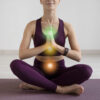In the vast world of yoga and holistic well-being, there exists a powerful yet often overlooked practice that has the potential to transform your life – Pranayama breathing.
It’s not just about inhaling and exhaling; it’s about tapping into the hidden energy that flows within us, known as “prana.”
In simple terms, prana is the life force that keeps us alive and kicking, and Pranayama is the art of harnessing and channeling this energy through the controlled rhythm of our breath.
Imagine it as a superpower hidden in plain sight, waiting for you to unlock its potential.
This comprehensive guide is your gateway to understanding the art and science of Pranayama breathing, offering you insights into the why, the how, and the incredible benefits that await as you embark on this journey.
Whether you’re a beginner taking your first steps into the world of yoga or a seasoned practitioner looking to deepen your practice, we invite you to explore the profound world of Pranayama breathing and discover how it can bring serenity, vitality, and balance into your life.
What Is Pranayama Breathing?

Pranayama is a yogic practice that involves the conscious control and regulation of one’s breath. Derived from the Sanskrit words “prana” (life force) and “ayama” (extension or control), pranayama encompasses a variety of breathing techniques aimed at enhancing one’s vital energy and promoting physical, mental, and spiritual well-being.
Practitioners engage in specific patterns of inhalation, exhalation, and breath retention to influence the flow of prana within the body.
Pranayama breathing techniques can vary in complexity, from simple deep breathing exercises to more advanced practices that require precise breath control.
Through consistent pranayama breathing practice, individuals seek to calm the mind, increase mindfulness, and harmonize their physical and energetic systems, ultimately promoting a sense of inner balance and vitality.
The Science Behind Pranayama Breathing
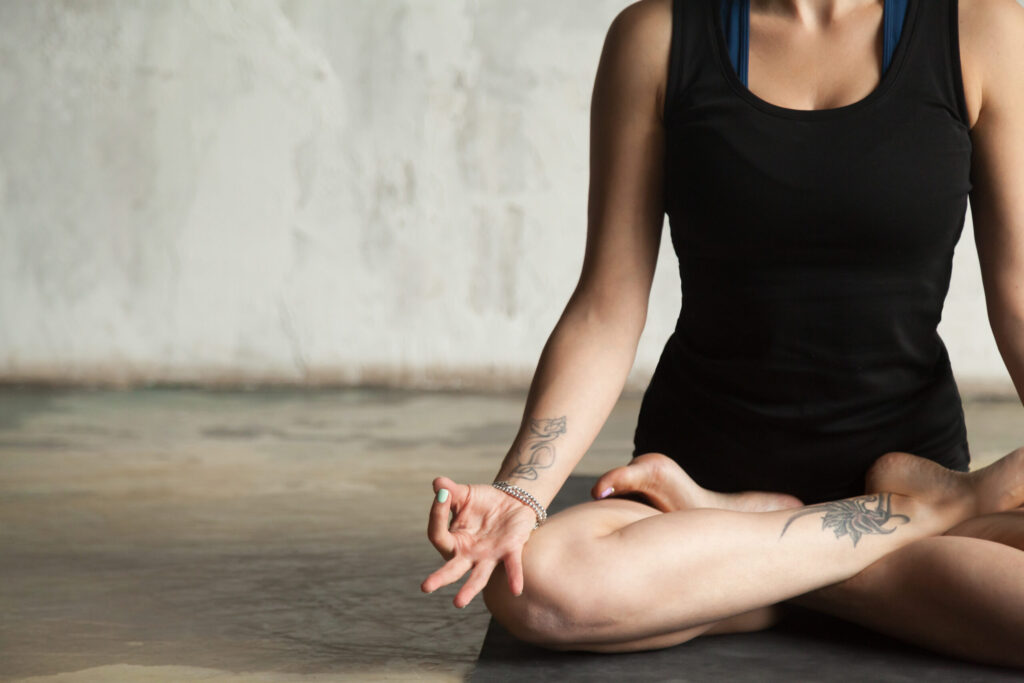
Pranayama Breathing isn’t just a bunch of old breathing tricks; it’s actually tied to some pretty cool science stuff.
You see when you do Pranayama breathing, you’re not just breathing; you’re talking to your body’s autopilot system, the one that manages things like your heartbeat and digestion without you even thinking about it.
When you use techniques like Dirga Pranayama, Ujjayi Pranayama, or any other Pranayama trick, you’re sort of telling this autopilot system to chill out, which can help you relax and reduce stress.
It’s like giving your body a little instruction manual on how to feel better.
But there’s more! Pranayama breathing also helps you pay better attention to your breath and how it connects to how you feel.
This is a big deal because it links your mind and your body in a super cool way.
Think of it as getting in touch with your life force, called “Prana,” which flows through you and gives you energy.
Preparing For Pranayama Breathing Exercises
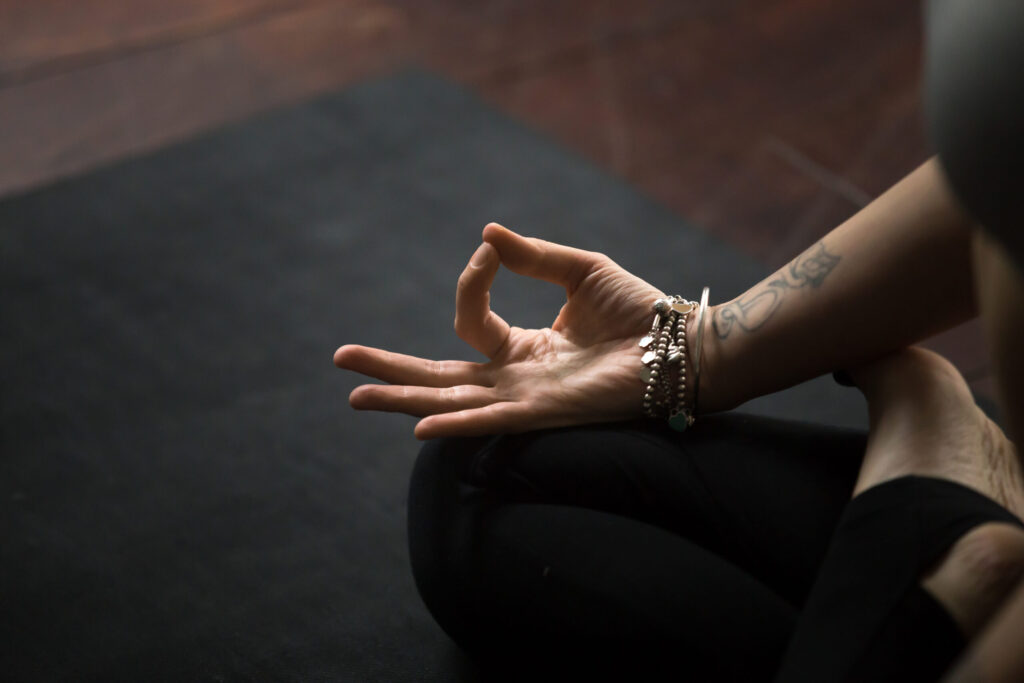
Before you get all into Pranayama Breathing, it’s essential to set up your practice correctly.
Find yourself a peaceful spot where you can do your thing without anyone bothering you.
Sit down comfortably with your back straight, like you’re ready to take on the world.
It’s best not to eat a big meal right before, so your tummy doesn’t get upset.
As you start your Pranayama session, don’t rush into fancy techniques just yet.
First, get cozy with your breath. Imagine you’re watching the waves at the beach. You’re not controlling them; you’re just watching them go in and out.
Similarly, watch your breath—notice how your chest and tummy move as you breathe. This simple step helps you get in sync with your breath’s rhythm, setting the stage for all those cool Pranayama tricks you’ll learn later.
Keep in mind that Pranayama breathing is like a journey, not a sprint. So, take your time, be patient, and keep coming back to these basics before you jump into the more advanced stuff.
It’s all about finding your groove and feeling awesome.
Essential Pranayama Breathing Techniques
Let’s explore the core Pranayama techniques, which are like the building blocks of your Pranayama Breathing journey.
Dirga Pranayama (Three-Part Breath)
Dirga Pranayama, often referred to as the Three-Part Breath, serves as an excellent starting point for your Pranayama journey.
This technique focuses on the three key areas of your respiratory system: the abdomen, ribcage, and chest.
The Three-Part Breath promotes relaxation, enhances lung capacity, and brings a profound sense of calm to the mind.
By mastering this technique, you lay a solid foundation for more advanced Pranayama practices.
To Perform It:
- Find a quiet and comfortable space to sit or lie down.
- Close your eyes to help focus your attention.
- Begin with a few natural, unforced breaths to establish your baseline.
- Inhale deeply through your nose, allowing your abdomen to expand fully.
- Continue inhaling, letting your ribcage expand.
- Finally, allow your chest to rise while taking a full breath in.
- Exhale slowly and completely through your nose, reversing the process.
- Focus on maintaining a steady, even rhythm of breath.
- Practice this technique for a few minutes, gradually extending the duration as you become more comfortable.
Ujjayi Pranayama (Ocean Breath)
Ujjayi Pranayama, known as the Ocean Breath due to the gentle ocean-like sound it creates, is a technique that involves constricting the back of your throat slightly during both inhalation and exhalation.
Ujjayi Pranayama not only aids in concentration but also helps reduce stress and anxiety. As you master this technique, you’ll find that it enhances mental clarity and promotes a sense of serenity.
To Perform It:
- Sit comfortably with your spine straight, or lie down if preferred.
- Close your eyes and take a few natural breaths.
- Inhale deeply through your nose, filling your lungs.
- As you exhale, constrict the back of your throat slightly, creating a soft, ocean-like sound.
- Focus on the sound of your breath and the sensation in your throat.
- Maintain a steady rhythm, with equal duration for inhales and exhales.
- Practice for several minutes, gradually extending your session over time.
Nadi Shodhana (Alternate Nostril Breathing)
Nadi Shodhana, or Alternate Nostril Breathing, is a powerful technique that focuses on balancing the energy channels in your body.
This alternating pattern clears energy blockages, calms the mind, and enhances overall well-being.
Nadi Shodhana is particularly beneficial when you seek to restore balance and harmony to your physical and mental state.
To Perform It:
- Sit comfortably with your spine erect.
- Use your right thumb to close your right nostril.
- Inhale slowly and deeply through your left nostril.
- Close your left nostril using your right ring finger.
- Release your right nostril and exhale through it.
- Inhale through your right nostril.
- Close your right nostril and release the left.
- Exhale through your left nostril.
- This completes one cycle.
- Repeat this pattern for several cycles, gradually increasing your duration.
Kapalbhati Pranayama (Skull-Shining Breath)
Kapalbhati Pranayama, known as the Skull-Shining Breath, involves forceful exhalations through the nostrils while keeping inhalations passive.
Regular practice of Kapalbhati Pranayama can leave you feeling rejuvenated and mentally alert.
It’s essential to perform this technique with care and gradually increase the intensity as your practice develops.
To Perform It:
- Sit with your spine straight, ensuring a comfortable posture.
- Take a deep breath in, expanding your abdomen.
- Begin exhalation by forcefully contracting your abdominal muscles.
- Exhale in quick, short bursts, allowing the inhale to happen passively.
- Keep your inhalations natural and unforced.
- Focus on the forceful exhalations while keeping your face relaxed.
- Start with a short practice session and gradually extend the duration as your comfort and proficiency grow.
Advanced Pranayama Breathing Techniques
Now that you’ve gained mastery in the foundational Pranayama techniques, let’s explore some advanced practices that can further elevate your Pranayama Breathing experience.
Bhramari Pranayama (Humming Bee Breath)
Bhramari Pranayama, also known as the Humming Bee Breath, takes Pranayama to a deeper level of meditative tranquility.
Bhramari Pranayama is exceptional for reducing stress, calming the nerves, and promoting a profound sense of inner peace.
It’s a practice that can help you achieve a meditative state and release tension accumulated throughout the day.
To Perform It
- Find a tranquil space free from distractions and sit or lie down comfortably.
- Gently close your eyes to encourage internal focus and relaxation.
- Take a few natural breaths to center yourself in the present moment.
- Begin by inhaling deeply and slowly through your nostrils, filling your lungs.
- As you exhale, close your lips and create a low-pitched humming sound in the back of your throat, like the buzzing of a bee.
- Allow the sound to resonate and fill your head and body, tuning into the vibrations it generates.
- Maintain a steady and soothing humming sound throughout the entire exhalation.
- Inhale naturally and repeat the process for several minutes, gradually extending the duration.
Sitali Pranayama (Cooling Breath)
Sitali Pranayama, often referred to as the Cooling Breath, is a valuable technique, especially during hot weather or moments of intense heat.
This technique helps reduce body heat, soothes the mind, and brings a refreshing sense of coolness to your body.
Whether you’re dealing with physical heat or emotional tension, Sitali Pranayama can provide instant relief and calm.
To Perform It
- Begin by finding a comfortable seated position or lying down for your practice.
- Close your eyes to enhance your internal awareness and calm your mind.
- Take a few natural breaths to settle into the present moment.
- Curl the sides of your tongue into a tube or “U” shape, creating a pathway for inhalation.
- Inhale slowly and deeply through your rolled tongue, experiencing the coolness of the inhaled air.
- Close your mouth gently and exhale through your nostrils.
- Focus on the refreshing sensation of coolness during inhalation and the warmth of exhalation.
- Maintain a steady and balanced rhythm, continuing this pattern for several cycles.
Sheetali Pranayama (Hissing Breath)
Sheetali Pranayama, the Hissing Breath, is another cooling Pranayama breathing technique that can be practiced to reduce stress and create a sense of calm.
This practice has a calming effect on the nervous system, making it beneficial for managing stress and anger.
It also helps in reducing body heat, providing relief during sweltering weather or moments of emotional intensity.
To Perform It
- Start in a comfortable seated position or lie down in a relaxed posture.
- Close your eyes to turn your attention inward and foster a meditative state.
- Take a few natural breaths to release tension and prepare for the practice.
- Roll your tongue into a straw-like shape, creating an avenue for inhalation.
- Inhale slowly and deeply through your rolled tongue, noticing the cooling effect as the air passes over it.
- Close your mouth gently and exhale through your nostrils.
- Concentrate on the soothing quality of this breath, calming your body and mind.
- Maintain a steady rhythm, synchronizing the duration of inhalation and exhalation.
- Practice Sheetali Pranayama for a few minutes, progressively increasing the duration as you grow more proficient.
Benefits Of Pranayama Breathing
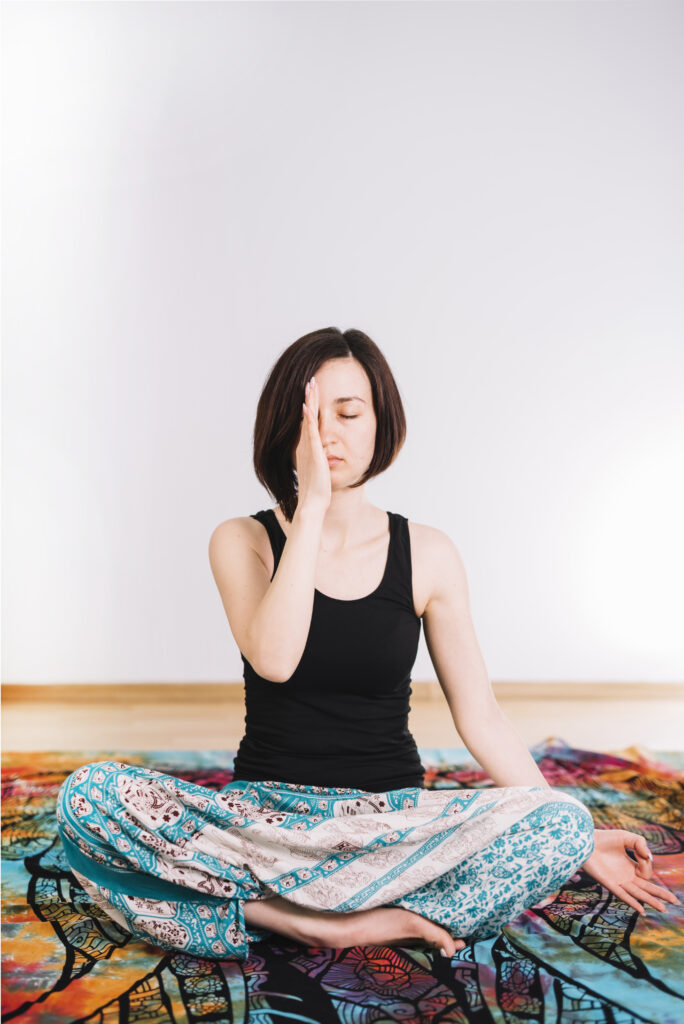
Pranayama Breathing exercises offer a multitude of benefits that can improve your overall well-being.
Physical Health Benefits
When you make Pranayama a part of your daily routine, you’re giving your body a gift.
Your lung capacity improves, ensuring your organs get more oxygen for optimal performance.
This boost in oxygen helps your immune system, making you less susceptible to illnesses.
Additionally, Pranayama assists your body in getting rid of toxins, which can lead to clearer skin, better digestion, and increased vitality.
Mental Clarity And Emotional Well-Being
Pranayama isn’t just about the body; it’s also about your mind and emotions.
Engaging in mindful breathing creates a peaceful mental space and clears away stress and anxiety.
By gaining control over your breath, you can gain control over your emotions too.
This means better management of anger, frustration, and other negative feelings, which can improve your relationships and your overall mood.
Plus, it enhances your focus and concentration, making you more effective in your daily tasks.
Spiritual Connection And Growth
Yoga Pranayama takes you on a journey inward, deepening your spiritual connection and self-understanding.
“Prana” refers to the life force, and Pranayama helps you tap into it.
Through regular practice of yoga pranayama, you become more mindful and aware of the present moment, and the beauty around you.
Many find that this practice leads to a profound understanding of their purpose in life and a deeper connection with themselves.
Tips For A Successful Pranayama Breathing Journey
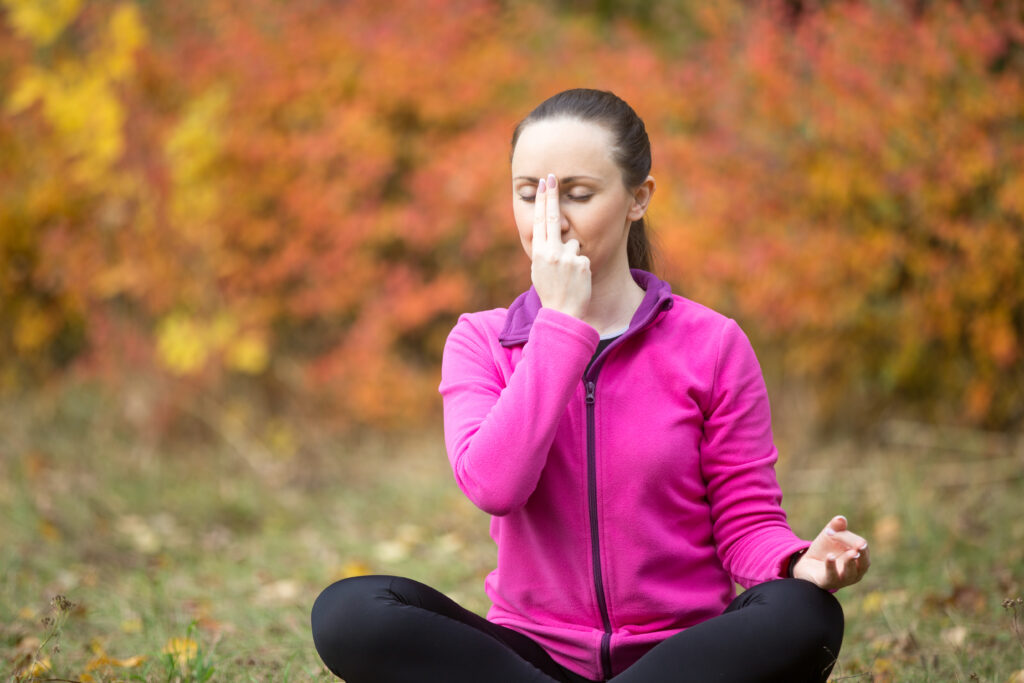
Consistency Is Key
To make the most of your Pranayama breathing exercises, consistency is crucial.
Start with a realistic schedule that you can maintain. Even just a few minutes each day can yield positive results over time. The more you practice, the more in tune you’ll become with your breath.
Patience And Progress
Be patient with yourself. Pranayama breathing is a skill that takes time to develop.
It’s normal to encounter challenges along the way. Celebrate small victories, and don’t get discouraged by setbacks.
Progress may be gradual, but it’s worth the effort.
Combine With Asanas And Meditation
Pranayama breathing exercises work beautifully in tandem with yoga asana practices and meditation.
Consider integrating these practices into a holistic routine. Combining them enhances your overall yoga experience and amplifies its benefits.
Common Challenges And Solutions
Breath Control Issues
It’s common to struggle with breath control initially. If you find yourself feeling breathless or light-headed, start with shorter sessions and gradually extend your practice.
Focus on steady, even breaths, and avoid forcing your breath. With time, your lung capacity will increase, and control will improve.
Distractions And Mind Wanderings
During Pranayama breathing exercises, your mind may wander or become distracted. This is normal.
When it happens, gently guide your attention back to your breath. You can use a mental anchor, such as counting breaths or focusing on the sensation of the breath at the nostrils.
With practice, your mind will become more centered.
Physical Discomfort
Sitting in one position for an extended period can sometimes lead to physical discomfort.
To alleviate this, choose a comfortable seating arrangement or use props like cushions or a chair.
Ensure that your posture supports your practice without causing pain or strain.
Frequently Asked Questions (FAQs)
Final Thoughts
In closing, Pranayama Breathing is not just a set of techniques; it’s a path to discovering your inner strength, peace, and vitality.
As you embark on this journey, remember that consistency and patience are your allies.
With each breath, you’re nurturing a deeper connection with your true self and inviting boundless health and serenity into your life.
So, embrace the power of Pranayama Breathing and let it guide you toward a brighter, more harmonious existence. Your breath holds the key to a life filled with balance, clarity, and profound well-being.













